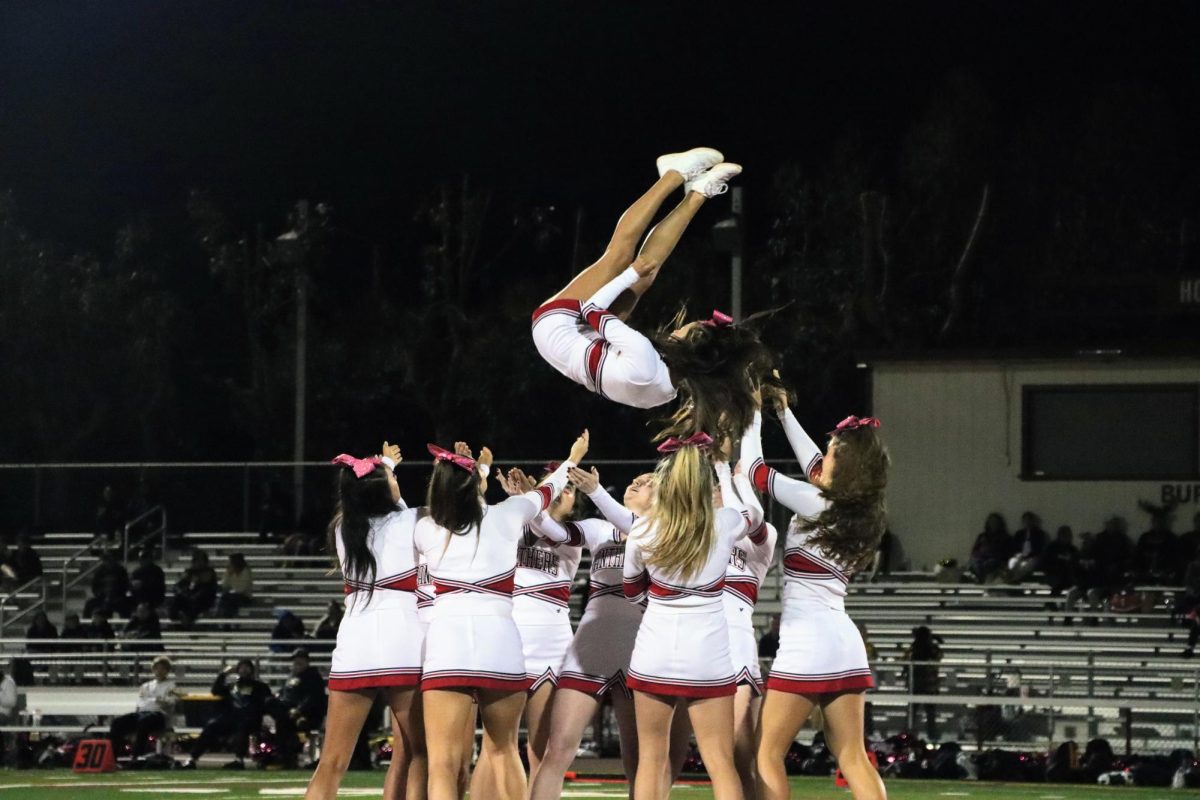“Cheerleading isn’t a sport.”
It’s a common sentiment echoed throughout school hallways and locker rooms. But understandably, it frustrates cheerleaders to have their athleticism constantly called into question.
The debate over whether cheerleading, especially sideline cheer, is a sport is not new. Those who oppose labeling cheer as a sport question the physicality involved, the absence of competition with other teams and the supposed fixation on appearance rather than skill.
Mainstream entertainment has helped cement the stereotypes of cheerleaders being divas and snobby “mean girls.” To senior and varsity cheerleader Zoe Ella Abbey, this couldn’t be any further from the reality.
“I mean, we’ve all seen those movies where the cheerleaders are usually portrayed as ‘mean girls’ but I feel like that’s not the case at all. I feel like the girls that I cheer with are the most genuine people I’ve ever met,” Abbey said.
Cheerleading is further misconstrued when people assume that because there are no points to be scored or baskets to be made, it is a non-competitive sport that demands less dedication than traditional sports. Contrarily, the cheer team practices five days a week for two hours at a time, just like any other sport at Burlingame. Cheerleading is also a longer time commitment than any other sport, as the squad performs in both fall and winter seasons.
In fact, cheerleaders are more prone to traumatic injuries than other sports due to the nature of the stunts performed. According to the National Center for Catastrophic Sport Injury Research (NCCSIR), high school cheerleading accounts for 65.2% of all high school female catastrophic sports injuries, placing it first as the most dangerous sport for female athletes. The danger that comes with the sport demands extreme precision and collaboration among team members to pull off the stunts.
“It’s a whole domino effect. If someone is not putting an effort then we all fall down,” Abbey said. “We have to give it our 100% all the time to work as a team.”
This season, sophomore and varsity cheerleader Natalia Cerc broke her collarbone and sustained a concussion during cheer practice. She emphasized that people are only able to see so much from the stands.
“People think it’s just us cheering on the sidelines, but during practice there’s so many risks and things that could go wrong that people don’t realize and we’re doing this to support our community and have good school spirit,” Cerc said. “People don’t see the actual danger behind it. It’s not just a fun little thing.”
While Burlingame does recognize sideline cheer as a sport, organizations such as the California Interscholastic Federation (CIF) and the Central Coast Section (CCS) do not, contributing further to sentiments that minimize cheerleading.
“I do see cheer as a sport. They’re out here practicing every day. They’re working out, they’re conditioning, they function as a team. I couldn’t see it any other way myself,” Athletics Director John Philipopoulos said.
Although Burlingame may be ahead of the curve in uplifting cheer, cheerleaders continue to face obstacles unique to them.
“We have some of the least funding and it’s hard to get to games when we’re not provided buses or vans like other teams are,” senior and varsity cheer captain Izzy Seligson said. “The first step is just recognizing that it’s an actual sport and treating [cheer] the same as the other [sports].”
Regardless of whether cheer is considered a sport or not, cheerleaders serve a broader role in the school community by facilitating spirit and camaraderie, and the team will continue to create a positive and energized environment.
“I feel they have a big role in implementing leadership, kind of just keeping that spirit alive because that’s what we’re known for,” Barron said. “I feel like the girls really try to implement that, when they’re walking onto campus with their uniform because they’re proud to be a panther.”
This story was originally published on The Burlingame B on November 19, 2023.




































